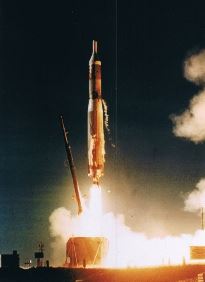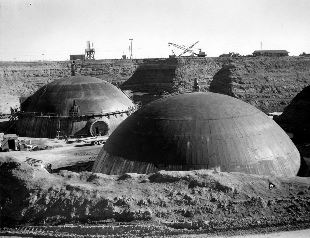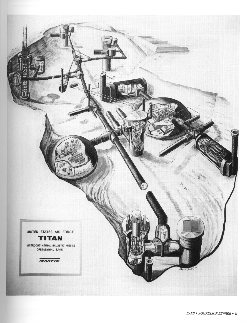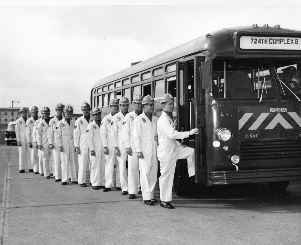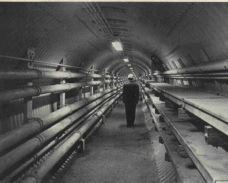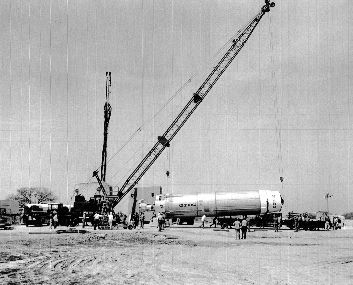Titan I (SM-68, HGM-25A, WS107A-2] In 1955, decision was made to pursue a second ICBM with the Martin Company, in case development of the Atlas ran into problems. Titan I was similar in many respects, but offered some advantages for future development. 220,000 two stage missile had a 300,000 pound thrust two chamber first stage engine, and a second stage engine with 80,000 pounds of thrust. Missile stood 95 feet high, and was deployed three to a complex in underground silos. First Flight after four successful first stage tests and one failure of a two stage missile, on 2 February 1960. Construction concurrent at all locations at same time as Atlas construction Deployment and Launch Sequence - Each complex had the three silos, along with propellant storage and equipment buildings, were connected to the underground control center, powerhouse and radio guidance antennas by tunnel. Tree complexes with total of nine missiles per squadron. Like Atlas D, used a radio-inertial guidance system, and the control center was equipped with a duplex guidance computer system for backup. There two guidance antennas that were raised to the surface for launch. Sat on alert fueled with RP-1, so only LOX had to be loaded at the start of the countdown. All three missiles at a complex could be LOX-loaded simultaneously, but only one raised topside for launch at a time. The first missile could be launched about fifteen minutes after notification, with the second and third following at about seven and a half minute intervals, since the guidance system could only control one at a time. |
Titan I at Liftoff Control Center and Power House Domes |
| Titan I Units 395 SMS, Vandenberg AFB, CA - one site with four silos, control centers in concrete shelters and guidance antenna separate. Activated January 1959, closed December 1969. (Was also a Titan II unit) 724 SMS, Lowiy AFB, C0 activated February 1960, closed June 1965. 725 SMS, Lowry AFB, CO activated August 1960, closed June 1965. (724SMS and 725SMS were originally the 848 and 879 SMS, were part of the 451 SMW, which was originally the 703 SMW] 850 SMS, Ellsworth AFB, SD, activated December 1960, closed March 1965. 851 SMS, Beale AFB, CA, activated February 1961, closed March 1965. 568 SMS, Larson AFB, WA, activated April 1961, closed March 1965. 569 SMS, Mt Home AFB, ID, activated June 1961, closed June 1965. Testing LOX and RP-1, periodically. This process duplicated the war-time countdown, with every aspect of the launch sequence tested up to the point of lift-off. The reentry vehicle or the RP-1 and explosive ordnance were removed before each test countdown, and the whole process took several days. Missiles were tested on a recurring schedule and usually, all nine missiles in a squadron were tested during an operational readiness inspection. Photos - Left, Missile raised on elevator, drawing of underground site. diesel generators below - Ops crew boarding bus to alert, tunnel to silos, Cole's crane lifting first stage |

